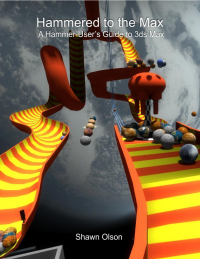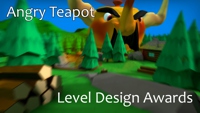Overview of Wall Worm Model Tools
The Wall Worm Model Tools takes a huge percentage of time out of making models for the Source Game Engine. Before WWMT, you were forced to spend a significant percentage of time doing things that many designers simply do not want to or cannot do. It is probably one reason that the number of people who have traditionally created model assets for Source is a lot lower than people designing levels.
Following is a list of things that have to be done to get your model into the Source Game Engine. When using WWMT, only step one is something you must do.
- Design your model (in a 3D app such as 3ds Max, Maya, XSI, etc). This part is still up to you!
- Make Level of Detail (low-res versions) models if you want to optimize your model for performance.
- Make Convex Collision Hulls if your model is used in any collision activity.
- Export you model, LODS, Collision Hull (and Sequences) as SMD files (that a Valve program will later turn into MDL files for game).
- Write out a QC file that explains what all of the pieces of the model do as well as controlling various settings of the model. This QC file has a lot of specific syntax and complexity that isn't very "artist-friendly".
- Export all bitmap textures as TGA files that you convert to VTF textures in Valve's vtex program.
- Create a VMT file that is a text file that explains the properties of the texture file.
- Compile the model by sending the QC file to the Valve model compiler.
As you can see, it doesn't sound all too fun. That's where WWMT comes in. Except for step 1, WWMT does all of the remaining steps for you!
This does not mean that you should never learn QC commands or rely entirely on WWMT for all scenarios. For most simple models, you can expect to use WWMT for the whole process. For more complex model projects, you can use WWMT as a crutch to simply build the groundwork for more complex QCs.
WWMT allows you to make many of the settings that you would otherwise have to type into your QC file. It includes the most common settings. It does not include all settings... which is why it is a starting point for more complex QC projects.
- Getting Started with WWMT
Getting started with using the Wall Worm Model Tools.
- Overview of Wall Worm Model Tools
- WWMT Requirements
- Installing Wall Worm Model Tools
- Running the Model Tools
- Understanding How to Set Up Paths
- Related Topics





